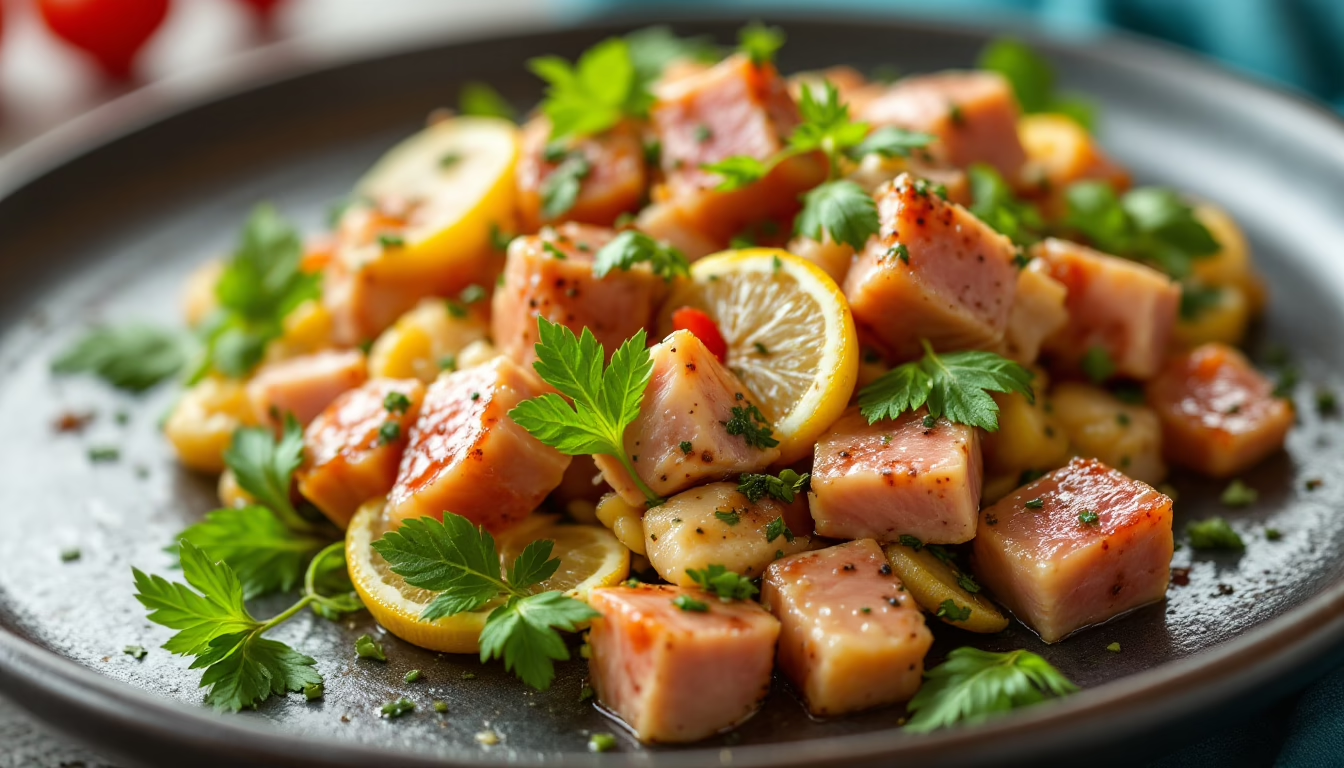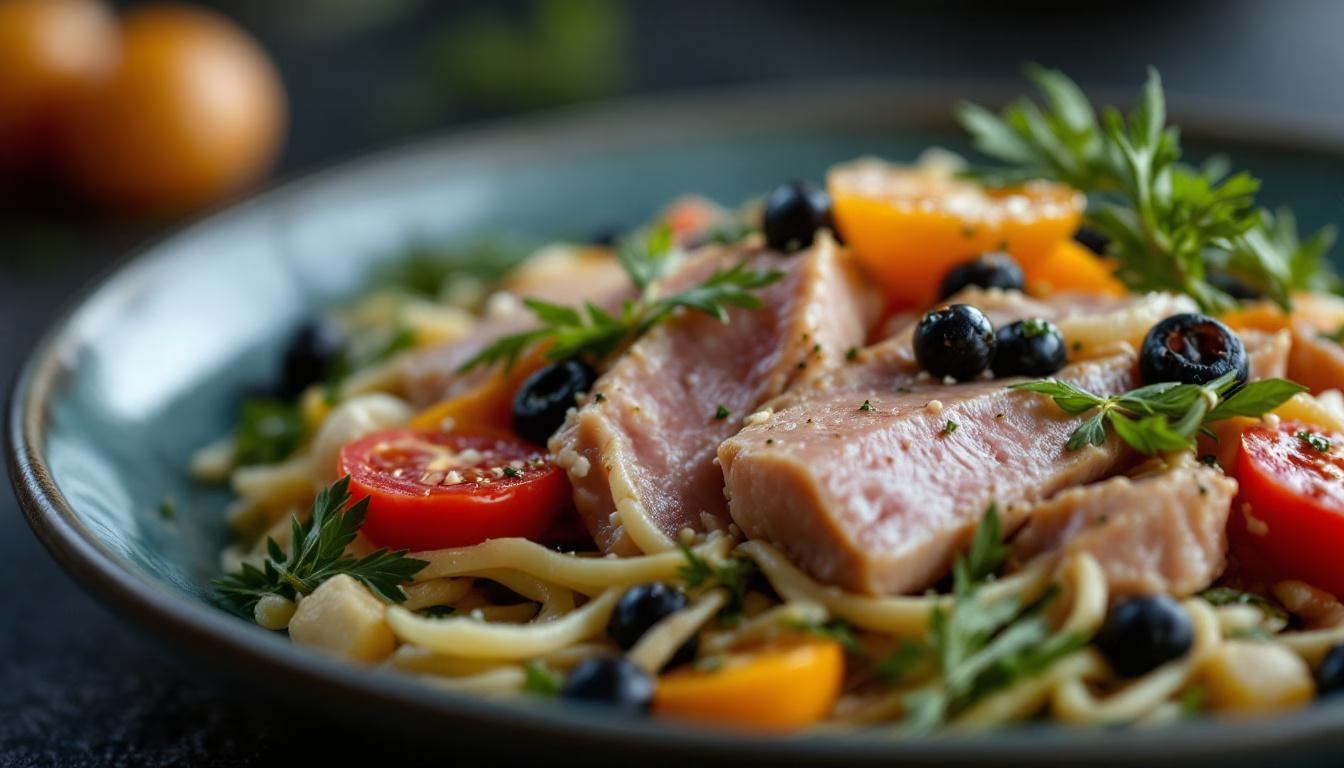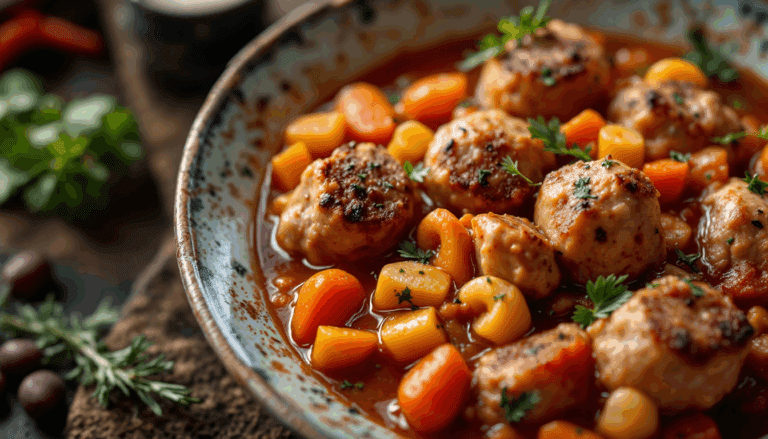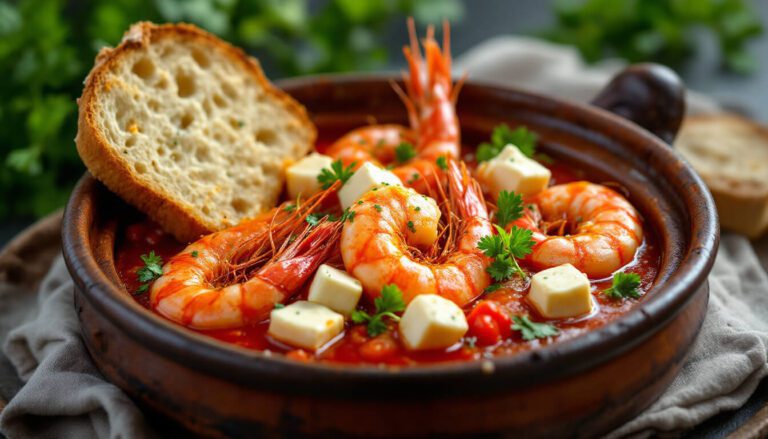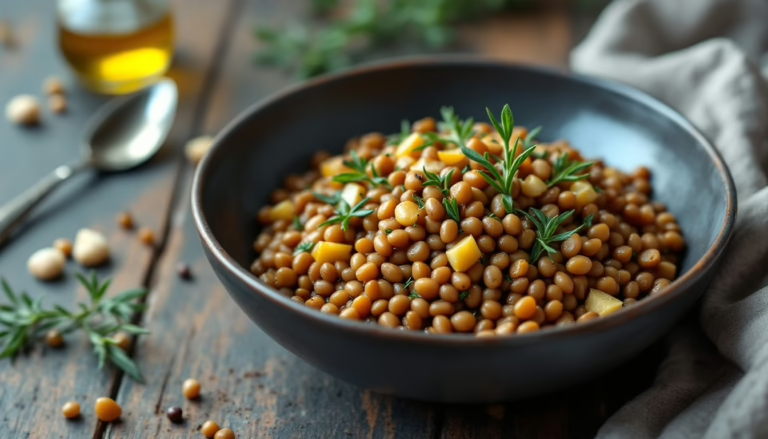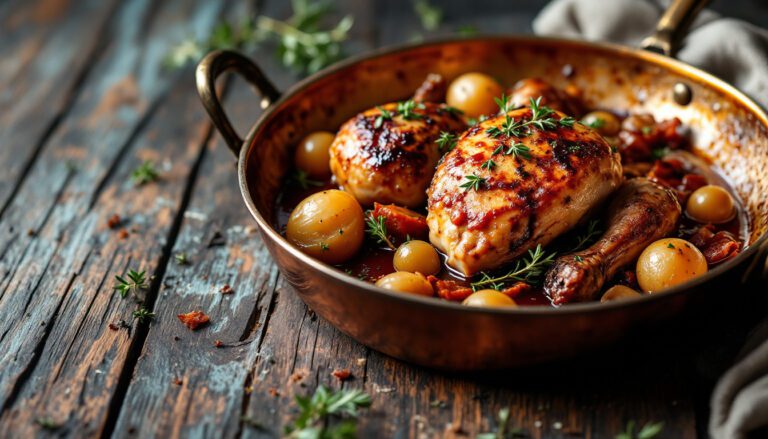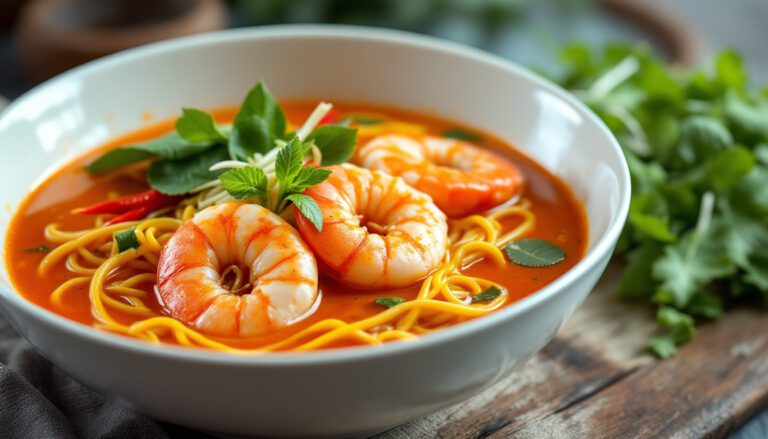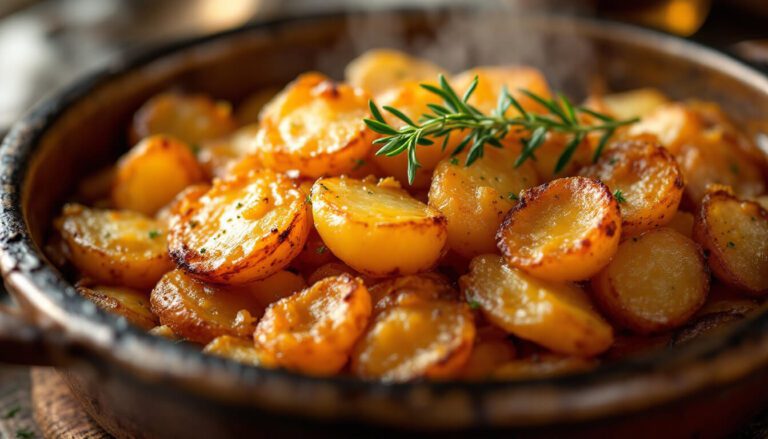Tuna Niçoise Recipe – French Salad Perfection
The Tuna Niçoise Recipe That Saved My Tuesday (And My Sanity) – There are moments in life when you realize you’ve been overthinking everything, and for me, that moment came on a particularly chaotic Tuesday when I stared into my refrigerator with the kind of desperation usually reserved for people trapped in elevators.
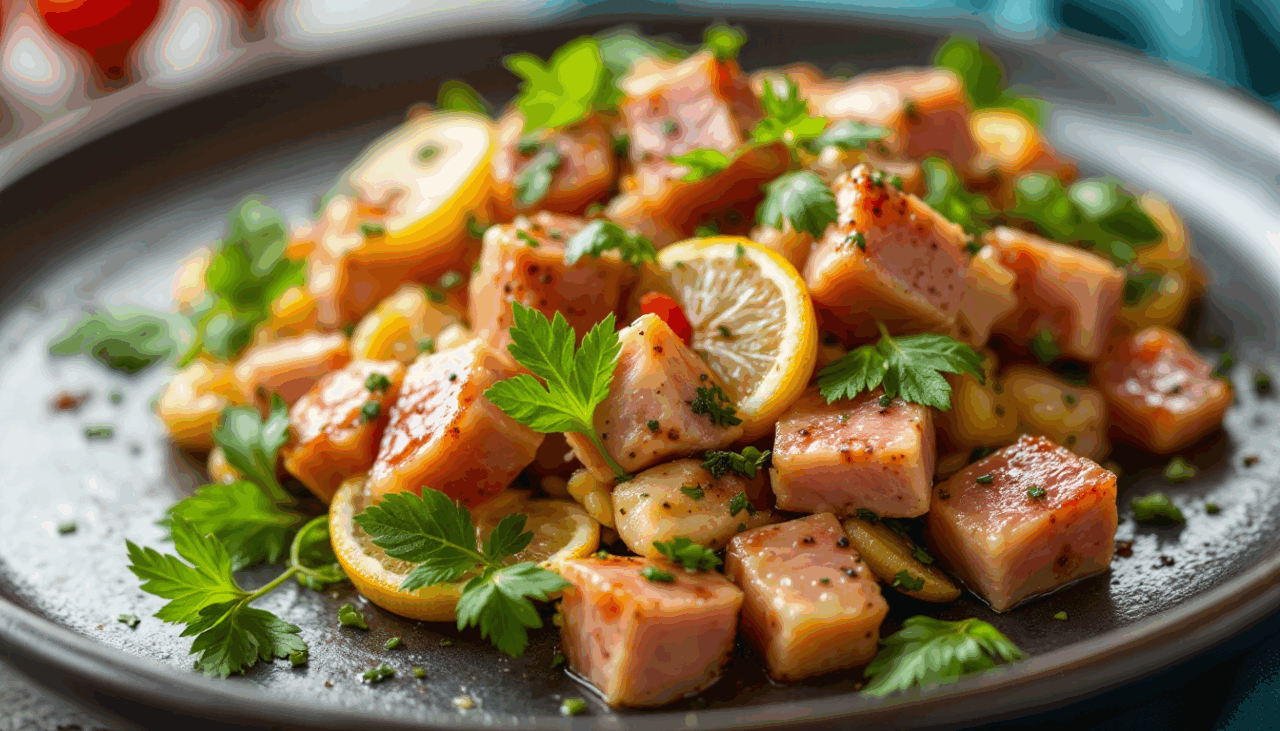
Tuna Nicoise
Ingredients
- 450g potatoes
- 2 tbsp olive oil
- 4 eggs
- 1 tbsp red wine vinegar
- 2 tbsp capers
- 50g sunflower oil
- 1/2 red onion
- 100g spinach
- 400g tuna
Instructions
- Heat oven to 200C/fan 180C/gas 6. Toss the potatoes with 2 tsp oil and some seasoning. Tip onto a large baking tray, then roast for 20 mins, stirring halfway, until crisp, golden and cooked through.
- Meanwhile, put eggs in a small pan of water, bring to the boil, then simmer for 8-10 mins, depending on how you like them cooked. Plunge into a bowl of cold water to cool for a few mins. Peel away the shells, then cut into halves.
- In a large salad bowl, whisk together the remaining oil, red wine vinegar, capers and chopped tomatoes. Season, tip in the onion, spinach, tuna and potatoes, then gently toss together. Top with the eggs, then serve straight away.
Nutrition
I had exactly forty-seven minutes before my kids would descend like locusts asking what’s for dinner, a bag of baby spinach that was threatening to turn into green slime by morning, and half a red onion that had been giving me judgmental looks from the vegetable drawer for three days.
The pantry offered up a can of tuna (the good stuff, thankfully — sometimes my past self actually makes decent decisions), some capers that I’d bought for a recipe I never made, and potatoes that were sprouting eyes but weren’t quite ready for the compost bin yet.
This is when I remembered something my French mother-in-law once told me during one of those conversations where she managed to be both helpful and slightly condescending: “Ma chérie, when you have nothing, you make salade niçoise.
It is not complicated.” She was right, of course (she usually is, annoyingly), but at the time I’d dismissed it as one of those things French people say to make cooking sound effortless while the rest of us mere mortals struggle with basic meal planning.
But standing there in my kitchen, surrounded by the evidence of my grocery shopping procrastination, I finally understood what she meant. This wasn’t about having the perfect ingredients — it was about making something beautiful and satisfying from whatever decent things you had on hand.
French-Inspired Tuna Niçoise Recipe for Busy Home Cooks
Niçoise salad — and yes, I had to look up how to type that little ç every single time until my computer finally learned — is one of those dishes that sounds fancier than it actually is.
Named after the city of Nice in southeastern France, it’s essentially the French equivalent of cleaning out your refrigerator, except somehow they made it elegant and gave it a proper name.
The traditional version calls for tomatoes, hard-boiled eggs, olives, anchovies, and vegetables like green beans or artichokes, all arranged artfully on a platter like edible artwork.
But here’s what I love about this tuna niçoise recipe: it’s incredibly forgiving. Unlike a soufflé that will collapse if you look at it wrong, or a delicate sauce that requires constant whisking and the perfect temperature, niçoise salad basically just asks you to cook a few simple things well and then arrange them prettily (or not so prettily — we’re not judging here).
The beauty lies in the combination of textures and flavors: creamy eggs, tender potatoes, peppery greens, briny capers, and that satisfying protein punch from good tuna.
What makes this particular version special is how it transforms humble ingredients into something that feels like a proper meal — the kind of thing you’d order at a bistro but can absolutely make on a weeknight when your brain is fried and your patience is thin.
How to Make the Perfect Tuna Niçoise Recipe
Let me walk you through this step by step, because while this tuna niçoise recipe is forgiving, a little technique goes a long way toward making it truly delicious rather than just edible.
Preparing the Foundation: Perfect Roasted Potatoes
The potatoes are arguably the most important part of this dish — they’re your carbohydrate foundation, and if they’re soggy or bland, the whole salad suffers. Start by preheating your oven to 200C (or 400F if you’re working in Fahrenheit like me).
Take 450g of potatoes — I prefer small waxy ones like fingerlings or baby potatoes because they hold their shape beautifully, but honestly, whatever you have will work. If you’re using larger potatoes, just cut them into bite-sized pieces, roughly 2-3cm chunks.
Here’s the key: toss those potatoes with 2 teaspoons of olive oil and a generous pinch of salt and pepper. Don’t be shy with the seasoning — potatoes are like sponges for flavor, and under-seasoned potatoes will make your whole salad taste flat.
Spread them out on a large baking tray (don’t overcrowd them or they’ll steam instead of roast), and pop them in the oven for 20 minutes, stirring them halfway through. You want them golden brown and crispy on the outside, tender on the inside — basically the potato equivalent of a perfect croissant.
The Art of the Perfect Hard-Boiled Egg
While the potatoes are doing their thing, let’s talk eggs. I used to be terrible at hard-boiled eggs — either they’d be overcooked with that grayish ring around the yolk, or undercooked and impossible to peel.
But I’ve finally cracked the code (pun absolutely intended).
Place 4 eggs in a small saucepan and cover them with cold water by about an inch. Bring the water to a rolling boil, then reduce the heat to maintain a gentle simmer.
Cook for 8-10 minutes depending on how you like your yolks — 8 minutes gives you a slightly jammy center, 10 minutes gets you fully set but still creamy. The moment the timer goes off, transfer the eggs to a bowl of ice water.
This stops the cooking process and makes them much easier to peel.
Let them cool for at least 5 minutes, then peel them under running water (the water helps separate the shell from the white). Cut them in half just before serving — the golden yolks are one of the prettiest parts of this dish.
Building the Dressing That Ties Everything Together
In a large salad bowl, whisk together the remaining olive oil (about 1 tablespoon), 1 tablespoon of red wine vinegar, and 2 tablespoons of capers. If you’ve never used capers before, they’re like tiny flavor bombs — salty, tangy, and slightly floral.
Don’t skip them; they add a brightness that elevates the whole dish.
Now, here’s a little trick I learned from that same French mother-in-law: add any chopped tomatoes you have to this dressing and let them sit for a few minutes. Even winter tomatoes (which, let’s be honest, are usually disappointingly bland) will release some juice and absorb the flavors of the dressing, creating a more complex base for your salad.
Assembling Your Masterpiece
Add half a red onion (thinly sliced — thick chunks of raw onion will overpower everything else), 100g of fresh spinach, 400g of good-quality tuna (drained), and those beautiful roasted potatoes to your dressing bowl. Here’s where the magic happens: gently toss everything together, being careful not to break up the potatoes or bruise the spinach too much.
Top with the halved eggs, cut side up so you can see those beautiful golden yolks, and serve immediately. The contrast of warm potatoes with cool greens, creamy eggs, and tangy dressing is absolutely perfect.
Expert Tips for Tuna Niçoise Recipe Success
After making this tuna niçoise recipe approximately a hundred times (okay, maybe fifty, but who’s counting?), I’ve learned a few things that make the difference between good and absolutely stellar.
Choose Your Tuna Wisely
Not all canned tuna is created equal, and in a dish this simple, the quality of your ingredients really shows. Look for tuna packed in olive oil rather than water — it has better flavor and texture.
If you can splurge a little, Italian or Spanish tuna is worth the extra cost. The chunks should be substantial, not flaky like the stuff you’d use for tuna salad sandwiches.
Temperature Matters More Than You Think
One of the things that makes this dish special is the contrast of temperatures and textures. Serve the salad while the potatoes are still slightly warm — it makes everything more interesting and helps the flavors meld together.
If you need to make components ahead of time, that’s fine, but try to time it so at least something is freshly cooked when you serve.
Don’t Overdress the Salad
Start with less dressing than you think you need, then add more if necessary. Overdressed salad is sad and soggy, and you can’t un-dress it once it’s mixed.
The goal is to lightly coat everything, not drown it.
Make It Your Own
This basic tuna niçoise recipe is incredibly adaptable. If you have cherry tomatoes, quarter them and add them to the dressing early so they get all jammy and delicious.
Green beans, blanched until just tender-crisp, are a classic addition. Olives (black or green) add another layer of Mediterranean flavor.
Even leftover roasted vegetables can find a home here.
Variations to Keep Things Interesting
Once you’ve mastered the basic tuna niçoise recipe, there are endless ways to make it your own without losing the essential character of the dish.
The Protein Swap
While tuna is traditional, this salad works beautifully with other proteins. Leftover roasted chicken, torn into bite-sized pieces, is delicious.
Smoked salmon turns it into something fancy enough for brunch guests. Even a handful of white beans can make it vegetarian while keeping that satisfying protein element.
Seasonal Adaptations
In summer, replace the spinach with peppery arugula and add fresh tomatoes, cucumber, and maybe some radishes for crunch. Spring calls for asparagus and peas.
Fall is perfect for roasted beets and toasted walnuts. The basic framework stays the same, but seasonal ingredients keep it fresh and interesting.
The Grain Addition
Sometimes I’ll add a cup of cooked quinoa, farro, or even leftover rice to make this more of a complete meal. The grains soak up the dressing beautifully and make the salad more filling — perfect for those nights when this needs to be dinner, not just a side.
Make-Ahead Magic
You can prep most components of this tuna niçoise recipe ahead of time. The potatoes actually improve after sitting in the dressing for an hour or so.
Hard-boiled eggs keep for days in the refrigerator. Just don’t add the spinach until right before serving, or it will wilt and lose its fresh appeal.
What to Expect (And Why This Recipe Works)
Here’s the thing about this tuna niçoise recipe: it’s not going to change your life or make you a better person, but it will give you a reliable, delicious meal that feels both comforting and slightly sophisticated. The first time you make it, you might be surprised by how much flavor comes from such simple ingredients — that’s the magic of good technique and quality basics.
Don’t expect Instagram-perfect presentation unless you’re naturally gifted at food styling (I am not). What you should expect is a salad that tastes like the sum of its parts plus something extra — that indefinable quality that comes when simple ingredients are treated with respect and combined thoughtfully.
The leftovers, if there are any, actually improve overnight as the flavors meld together. I’ve been known to eat cold leftover niçoise for breakfast with a piece of crusty bread, and it’s honestly not a bad way to start the day.
Most importantly, this recipe gives you confidence. Once you’ve made it a few times, you’ll start to see the template: protein, vegetables, eggs, potatoes, good dressing.
You’ll begin to improvise, to use what you have, to trust your instincts. And that, more than any specific dish, is what good cooking is really about.

